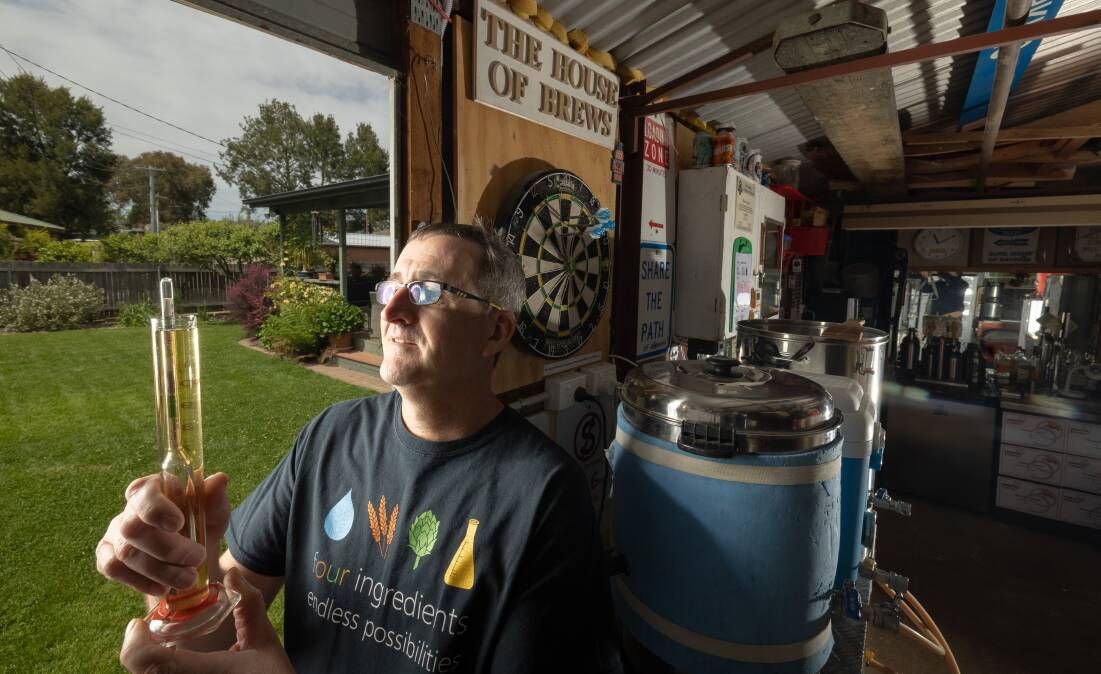
The best way to make spaghetti bolognese is from scratch with all fresh ingredients. But you can also make it from a jar of sauce and dried pasta you buy at the supermarket. Or any combination in between.
It's the same with homebrewing beer. It's simply a form of cooking, with a recipe of ingredients and a process to follow. As simple or complicated as you want to make it.
You can make it using all the fresh ingredients of grains - like barley, wheat and rice - hops and yeast. Or you can use a can of extract and some form of sugar - all readily available in shops. And brew it in a something like Cooper's DIY kit.
The latter's a great starting point for any beer enthusiast wanting to make the leap into the world of homebrewing.
The downside is it can have that distinct homebrew twang. So I found a couple of Canberra's award-winning brewers for some tips and tricks that will quickly have you brewing beer you'll proudly be sharing with your mates.
It's the perfect way to celebrate Australia's emergence from more than two years of pandemic hell. Touch Omicron wood.
BentSpoke brewer Richard Watkins is a two-time Australian champion brewer and he started out using extract kits back in the late 80s before embarking on a commercial career.
He got a job with Hahn in Sydney while still at university before moving to Canberra and spending 17 years at the institution that was the Wig and Pen. Then he set up BentSpoke.
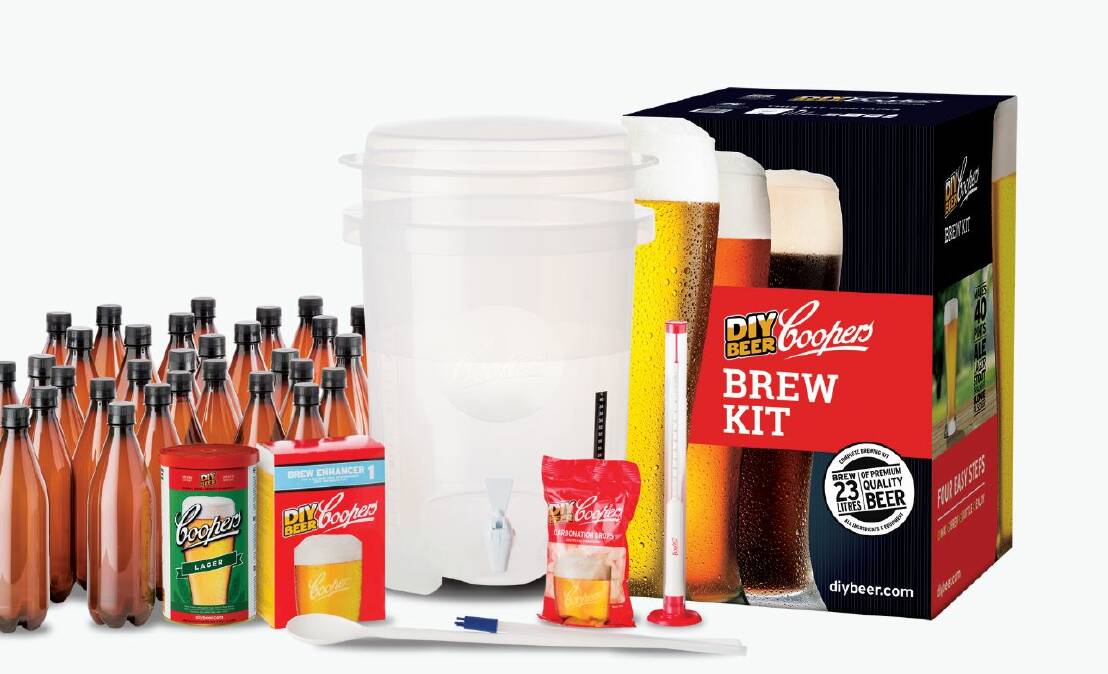
"I found you can only go so far with a kit. If you really want to try and brew the best beer you can then you need to do what's called a full-mash brew - so you need to brew from fresh ingredients," Watkins said.
"And the best similarity is if you go to the supermarket and you want to make spaghetti bolognese you can either buy the tomato-based jar of sauce or you can make your whole spaghetti bolognese from real tomatoes and basil - and that's exactly the same with homebrewing.
"If you want to make a good beer pretty quickly and pretty easily then you use a kit.
"If you want to really concentrate on making something similar to a real commercial beer then you want to go from full ingredients."
Champion homebrewer Stephen Lawford won his sixth ACT title last year with a clone of Cooper's Sparkling Ale.
I had the pleasure of putting that award-winning beer to the test - tasting it alongside Cooper's signature beer - and it was impossible for this Adelaidean suckled on Sparkling Ale to tell the difference.
To help make the beer world your oyster, Lawford revealed the Holy Trinity of homebrewing - sanitation, yeast and temperature control.
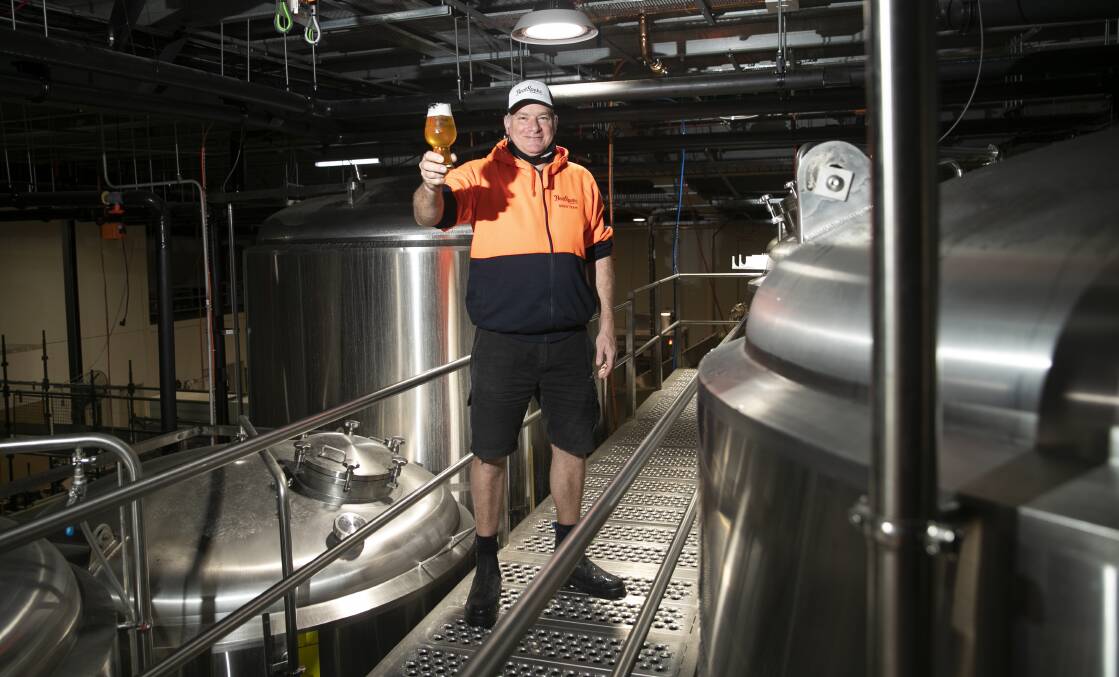
From there you can start getting creative - homebrewing is a combination of art and science after all - using different grains and hops to give your homebrew distinct flavours and aromas.
"You take those tips and that's where that homebrew starts not to taste like homebrew," Lawford said.
"That's one step closer to not having that homebrew twang to it."
But let's start from the beginning. The most important step in making beer.
Sanitation, sanitation, sanitation
It's not the sexiest thing in the world, but both Watkins and Lawford agreed it was the most important.
Some say it's the three rules of brewing. Sanitation, sanitation, sanitation.
You need to make sure your brew kit and everything else you use is clean and sanitised so you don't get any rogue flavours ruining your beer.
While bleach can be used, it can also lead to off flavours, so your best bet is to tap into the wealth of information that is your local home brew store to find products that are designed for brewing.
"They say the three rules of home brewing is sanitisation, sanitisation, sanitisation," Lawford said.
"It's probably not best to use bleach - any residual bleach can develop significant off flavours in your beer.
"There's plenty of sanitisers out there from your home brew store. I'd look at something a bit more specific than bleach."
Watkins said it is important to have everything clean and sanitised all the way through the homebrewing process, including bottling your beer.
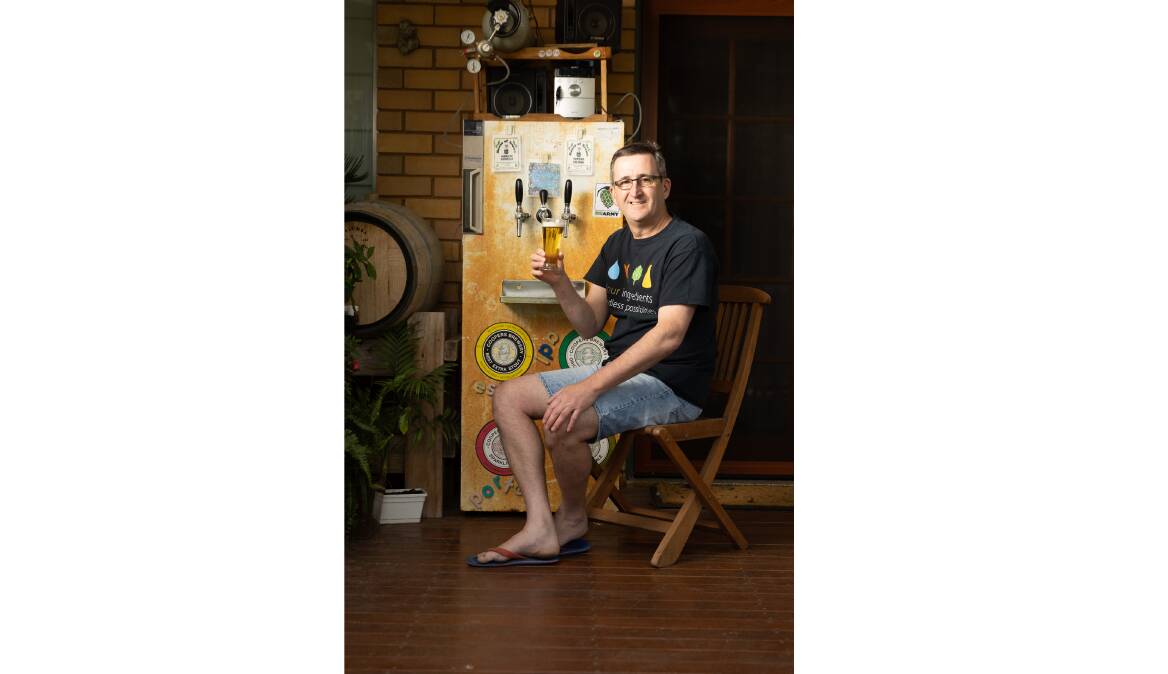
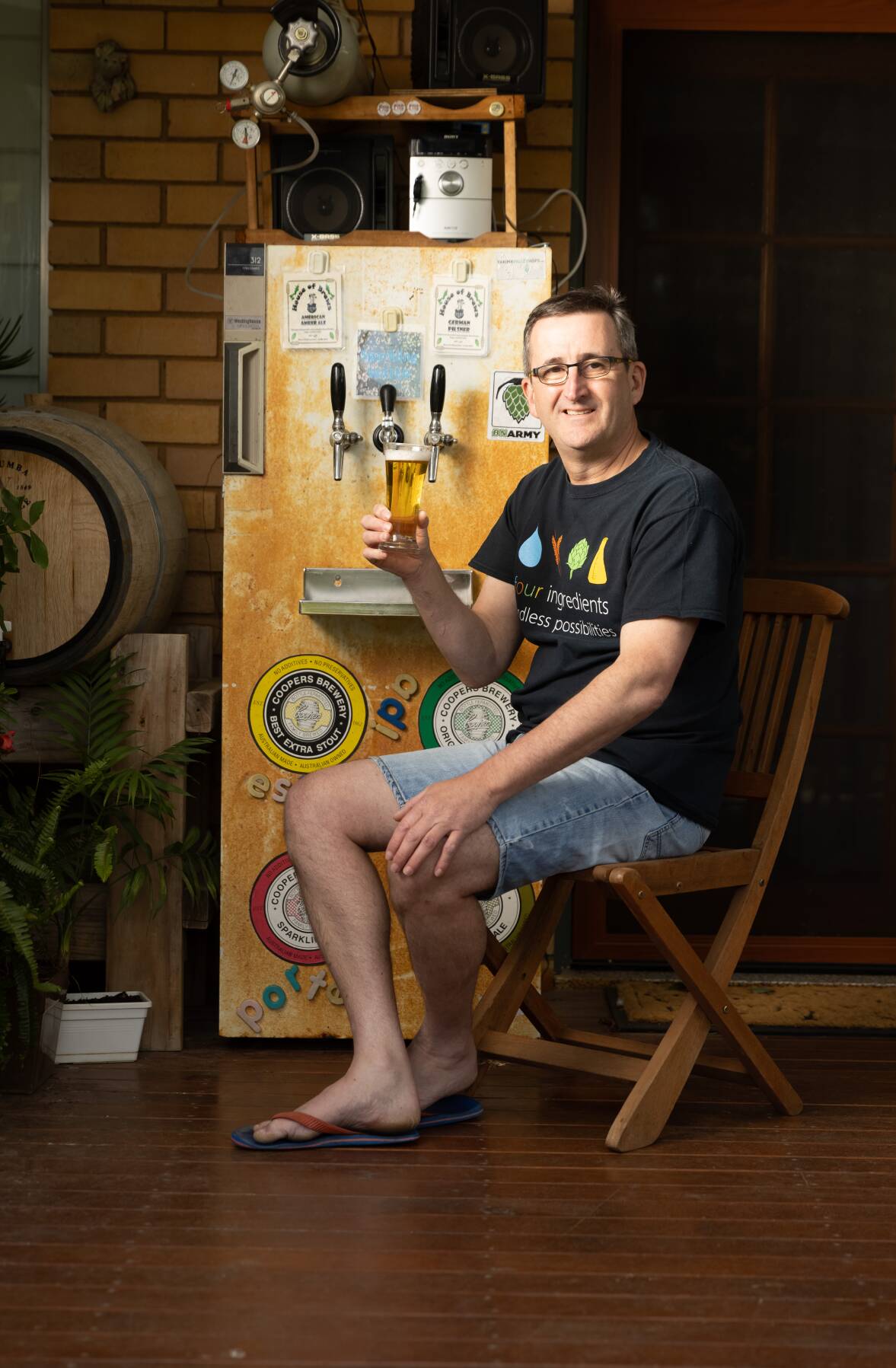
"You just want to be really clean. Make sure your fermenter's sterilised. You don't want to be putting your fingers in the beer," Watkins said.
"You don't want to let any outside air get into the beer. You don't want to let the beer sit around too long once it's fermented ... and you want to bottle it straight away into really clean, sterile bottles."
Yeast makes beer
The next tip? Take the yeast you get with your extract can and throw it away. Or use it to make bread.
For about $5 you can buy a yeast designed to brew whatever style of beer you want to.
There's yeasts for ales, yeasts for lagers. If you want a fruity flavour - there's yeasts for that too.
Regardless of what extract can you use, a different yeast will make a different beer.
"While yeast is the smallest component of beer, it is the most important. It's what makes the beer," Lawford said.
"Probably the best advice is to get that packet of yeast off the top of the can and throw it in the bin. And buy a pack of dry yeast - and they are cheap. Well worth the money."
Also, if you're making a lager then double up on the yeast.
"If it's a lager instead of pitching one pack of yeast, pitch two packs, because you need twice as much yeast to make a lager as you do to make an ale," he added.
Temperature is a constant
Yeast is a lot like a grey nomad heading north to Queensland for winter - it loves a constant temperature.
For an ale, 19-21 degrees is best. While for lagers you want it a bit cooler - about 12-15.

But unless you've got central heating (and cooling) that's always on - that's easier said than done.
A worthwhile investment is a temperature controller than can be used for both heating and cooling - a heat belt or mat plugged into one port and a fridge into the other.
Obviously, not everyone's going to have a spare fridge lying around so there's a simple trick you can use to keep your beer cold.
Watkins recommended always aiming to keep your beer at the low end of the temperature range recommended for the yeast you're using.
"There's lots of tricks you can do to try and keep your fermenter cool," he said.
"You can put it in your bathroom, put a wet towel over it.
"If you've got a spare bar fridge pull out the shelves and stick it in the fridge with a little [temperature] controller.
"In winter you don't want to let it get too cold either. You can get a heat mat or a heat blanket to put around it.
"You want to try and avoid it getting too much past 22 degrees because that's when you got those real estery characters which are going to give it that homebrew taste."
Make it Kveikly
This can be a game changer. Especially in summer in the middle of a heat wave.
Who would've thought a yeast from Norway would be the perfect solution for brewing beer in the sweltering Australian sun.
But Kveik yeast is exactly that. Loves the heat. And loves to brew quickly, so you'll be bottling your beer within a couple of days.
It means you don't need to worry about wrapping your brew kit in wet towels. Or even putting it in a fridge to keep the temperature down.
Just let it rip.
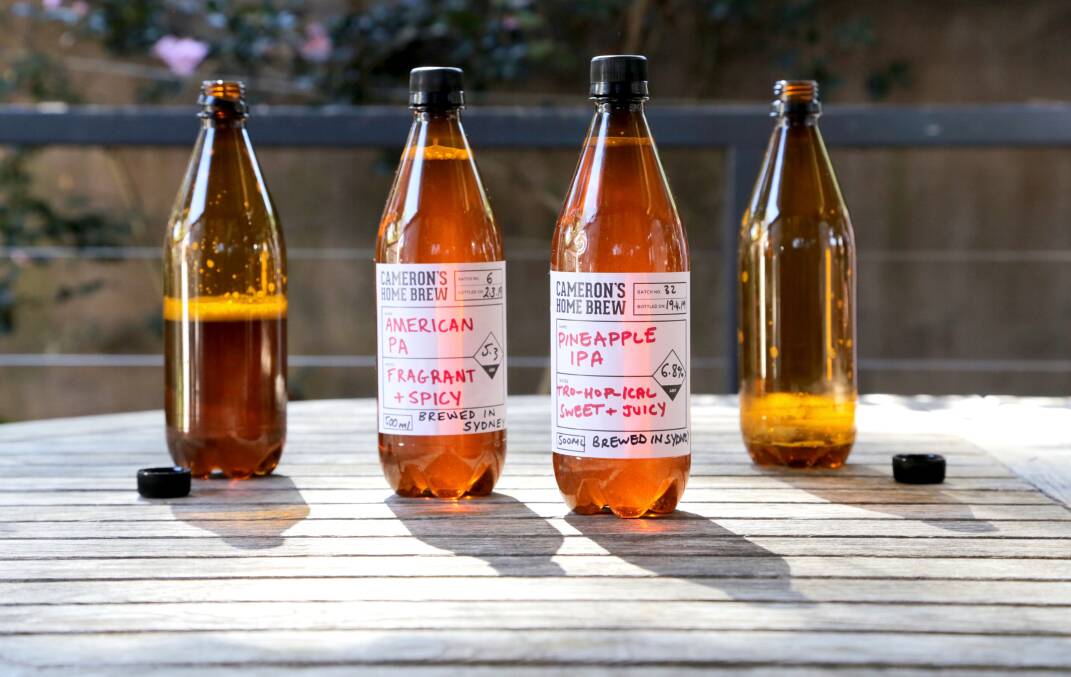
"This is a massive game changer for homebrewers," Lawford said.
"It will happily ferment in 30-40 degree temperatures. A lot of brewers use it in summer time. That's a good option for new brewers in summer time with no temperature control.
"The beer will ferment really quick, it will clear up really quick and there's minimum off flavours. That's a big game changer as far as yeast is concerned."
Pimp my beer
Now it's time to take your brewing to the next level - with the use of specialty grains and hops in a "mini mash".
It's like adding some fresh basil and ingredients to your jar of bolognese sauce.
You can steep and boil various varieties of grains and hops to add flavour, body and aroma to your extract kit.
The internet's awash with information. And there's books. And your local homebrew shop's a great place to start for advice.
"From there it's ... adding your own personal touches to a beer. It's using specialty grains and doing a stove top 'mini mash'," Lawford said.
"There's lots of information out there, but the best place to start is at your homebrew store.
"They know their stuff and they can point you in the right direction. It's always good to lean on them for advice.
"Cooper's kits are, quality wise, perfect. They're the perfect base to work from with one of these mini mashes."
Go clubbing
There's also another goldmine of information on homebrewing - your local homebrew club.
It's full of people like Lawford who are more than willing to taste your beer and give you tips on how to make it even better.
They're literally walking and talking encyclopedias on beer.
"Join up to the Canberra Brewers, the local homebrew club, because there's a wealth of knowledge in that club," Watkins said.
"ACT has been champion state at the Australian amateur brewing championships multiple, multiple times.
"It's probably the most awarded state or territory so there's so many great brewers there. I highly recommend joining up if you really want to progress your brews."
Watering it down
Water's also an important ingredient in beer. Not surprising given you'll use at least 20 litres for your homebrew.
The different minerals in the water from around the world helps create the distinct styles and flavours from place to place.
For the advanced, like Lawford, you can adjust those mineral levels yourself, but for the beginner there's one simple tip - get rid of the chlorine in Canberra's water.
That's as easy as letting it sit overnight.

"Water is another good one depending on where you are. In Canberra we've got really soft water, which is really good, but it is chlorinated," Lawford said.
"Personally I adjust water minerals - you don't have to do that at the beginner level - but an easy way to get rid of chlorine is to get the water and put it in a bucket or your fermenter the day before and the chlorine will evaporate overnight.
"Chlorine can promote off flavours, it won't ruin your beer if you don't, but your beer will be better if you do."
And there's nothing like a better beer to wash down your spaghetti bolognese. Bellissimo!
We've made it a whole lot easier for you to have your say. Our new comment platform requires only one log-in to access articles and to join the discussion on The Canberra Times website. Find out how to register so you can enjoy civil, friendly and engaging discussions. See our moderation policy here.







